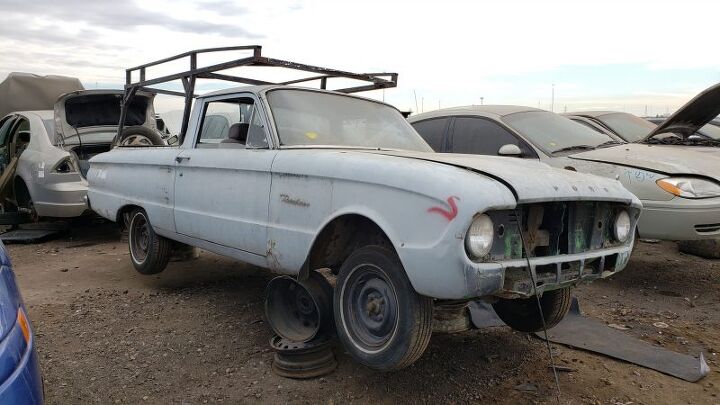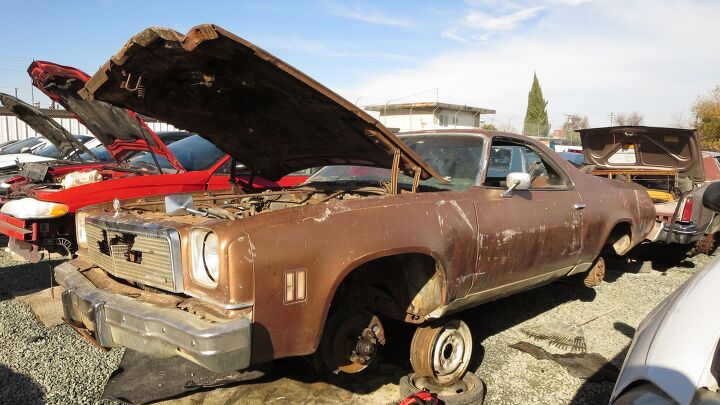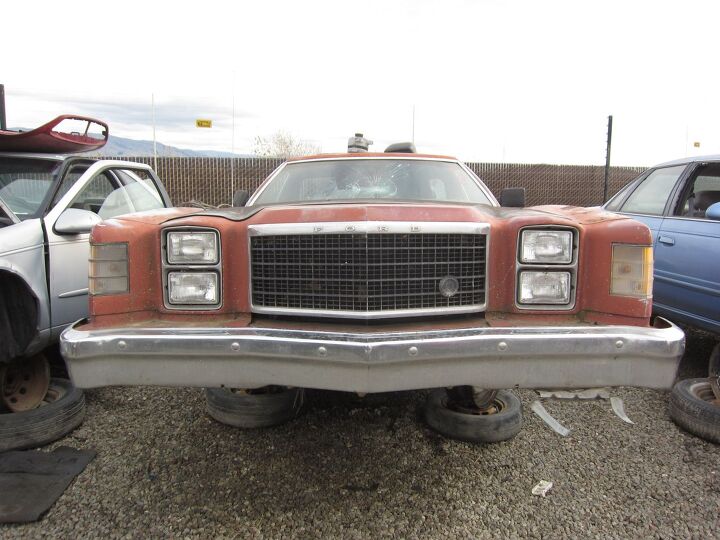#Cartruck
Junkyard Find: 1983 Dodge Rampage
Once the Dodge Omni/ Plymouth Horizon, front-wheel-drive econoboxes that began life as Chrysler Europe designs, proved to be strong sellers in North America, Lee Iacocca and his poker buddies decided that a pickup based on the Omnirizon platform would be a fine idea. The result was the Dodge Rampage and its Plymouth-badged sibling, the Scamp. I found one of those cartrucks in a Denver-area wrecking yard a while back.
Junkyard Find: 1983 Plymouth Scamp
North American sales of Japanese-made small pickups went crazy during the 1970s, with the Detroit Big Three getting in on the action with rebadged Mazdas, Isuzus, and Mitsubishis. Ford and GM eventually created their own Michigan-style small trucks, the Ranger (1983 model year) and S-10 (1982 model year) but where was struggling Chrysler— in a frenzy trying to get the new K-Cars out the door— supposed to find enough money to develop a new truck design from scratch? Fortunately, Volkswagen had shown that front-wheel-drive worked well enough in little pickups, and the versatile Omnirizon platform proved suitable for a bit of El Camino-ization. Here’s the result, found in a Denver yard last summer.
Junkyard Find: 1961 Ford Falcon Ranchero
Junkyard Find: 1977 Ford Ranchero GT Brougham
Since we haven’t seen a Ford product in this series since this Fox Granada four months ago, and we just saw three GM cars in succession, I decided this week would be the turn of a once-plush Ranchero GT Brougham, now fallen on hard times in a San Jose self-service wrecking yard.
Junkyard Find: 1974 Chevrolet El Camino
The Chevrolet El Camino reached its largest size in the 1973-1977 fourth-generation version, while engine power decreased at about the same rate as its bumper size increased. Still, these cartrucks are somewhat sought-after today, more so than the later, smaller G-body-based ones.
Since you won’t see many of these vehicles in self-service wrecking yards, I thought this California example was worth including in this series.
Junkyard Find: 1979 Ford Ranchero
Ah, the Malaise Era! Engines making one horsepower per three cubic inches. Broughams, Landaus, and molded-in fake stitching on petroleum-distillate Simu-Vinyl™ upholstery. And, of course, a pseudo-pickup based on the Ford Thunderbird platform. 1977-79 Rancheros still show up in California wrecking yards now and then, and that’s where I saw this green-on-green-on-green-on-some-more-green ’79 last fall.
Junkyard Find: 1978 Ford Ranchero
Ah, the Malaise Era. Some cars are just poster children for the 1973-1983 period of diminished expectations, sclerotic automaker bureaucracy, tape stripes, and the ascendancy of focus-group marketers. Take, for example, the 1977-1979 Ranchero, during which Ford decided to use the massive Thunderbird platform as the basis for their popular cartruck. It should have been a commercial disaster, but in fact it sold quite well.






















Recent Comments